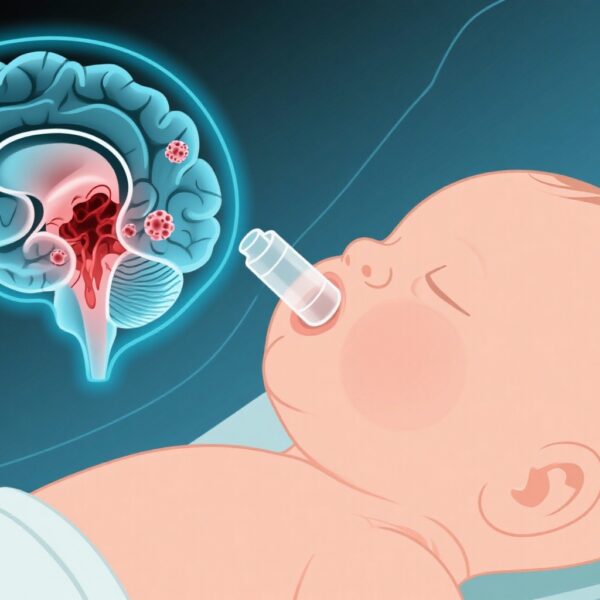Study Background and Disease Burden
New-onset heart failure with reduced ejection fraction (HFrEF) presents a significant diagnostic challenge that critically impacts clinical management and prognosis. Determining whether the underlying cause is ischemic cardiomyopathy (ICM) or a nonischemic etiology is essential because it guides therapeutic interventions such as revascularization. Percutaneous invasive coronary angiography (CATH) remains the classical diagnostic standard for assessing coronary artery disease (CAD) in this context due to its high spatial resolution and ability to directly visualize coronary anatomy and guide interventions. However, CATH is invasive and carries procedural risks.
Cardiac magnetic resonance imaging (CMR) has emerged as a noninvasive imaging modality capable of characterizing myocardial tissue, identifying ischemic scar, and differentiating ischemic from nonischemic patterns of injury. Despite this, CMR has not supplanted CATH as the primary diagnostic tool. The potential for CMR to diagnose ICM accurately and reduce the use of invasive angiography remains uncertain, prompting the need for rigorous comparative studies.
Study Design
The Magnetic Resonance Imaging vs Invasive Coronary Angiography as First-Line Diagnostic Modality in New-Onset Heart Failure trial was a multicenter, randomized, two-armed diagnostic study. It enrolled 229 adults presenting with new-onset HFrEF defined by a reduced left ventricular ejection fraction. Participants were randomized to undergo either CMR or CATH first, followed by crossover to the alternate diagnostic modality. This design allowed head-to-head comparison within individuals while controlling for disease progression.
Expert panels independently evaluated each imaging modality’s results while blinded to the counterpart modality assessments. The cardiologist in charge, also blinded to panel readings, served as the reference standard diagnosis adjudicator. The primary endpoint was the diagnostic accuracy for ischemic cardiomyopathy, with a secondary objective of assessing whether a CMR-first strategy could safely reduce the number of invasive angiographies performed.
Key Findings
Among 203 patients with paired diagnostic data (mean age 62 ± 14 years; 28% female), 108 underwent CATH first. Panels considered the diagnostic information adequate to establish ICM in 100% of CATH evaluations versus 80% of CMR evaluations (P < 0.001), reflecting perceived diagnostic certainty.
When benchmarked against the clinical reference standard, sensitivity for diagnosing ICM was similarly high: 91% for CATH and 90% for CMR (P = 1.00), indicating comparable abilities to detect true positives. However, CMR demonstrated a notably lower specificity than CATH (74% versus 98%, P < 0.001), implying a higher false-positive rate with CMR.
Importantly, the expert panel analyzing CMR suggested that 48% of subsequent CATH procedures could have been safely omitted had a CMR-first approach been adopted. Even excluding patients who ultimately required coronary interventions, approximately 45% of invasive angiograms may be avoidable using CMR as the initial test without jeopardizing patient safety or missing critical coronary interventions.
Expert Commentary
This trial provides compelling evidence that while CATH remains the gold standard with superior diagnostic certainty, CMR is remarkably sensitive and can serve as a robust first-line diagnostic tool in new-onset HFrEF. The higher false-positive rate with CMR may be due to interpretative variability or the intrinsic modality limitations in assessing coronary anatomy compared to angiography. Nonetheless, the ability of CMR to noninvasively characterize myocardial pathology and reduce unnecessary invasive procedures offers substantive clinical and economic benefits.
The study’s strengths include its randomized, paired design, blinded assessments, and pragmatic clinical endpoints. However, limitations include the incomplete sufficiency rate of CMR in establishing ICM diagnosis and its lower specificity. The generalizability may be influenced by expert panel expertise and the availability of high-quality CMR imaging in routine clinical practice.
From a mechanistic viewpoint, CMR’s tissue characterization capabilities allow detection of both ischemic scar and alternative pathologies such as fibrosis, myocarditis, or infiltrative processes, which invasive angiography cannot identify. This multidimensional diagnostic capacity places CMR in a unique position for comprehensive heart failure evaluation.
Conclusion
Although invasive coronary angiography remains the definitive modality for diagnosing ischemic cardiomyopathy in newly diagnosed heart failure, cardiac magnetic resonance imaging demonstrates similar sensitivity and offers considerable potential to minimize invasive procedures. Implementation of a CMR-first diagnostic strategy may optimize patient care by combining diagnostic accuracy with a safer, less invasive approach.
Future longitudinal studies are warranted to evaluate the impact of a CMR-first strategy on patient prognosis, healthcare costs, and clinical decision-making pathways. Integrating advanced imaging modalities refined by evolving technology and expertise could reshape diagnostic algorithms for ischemic heart failure in clinical practice.



